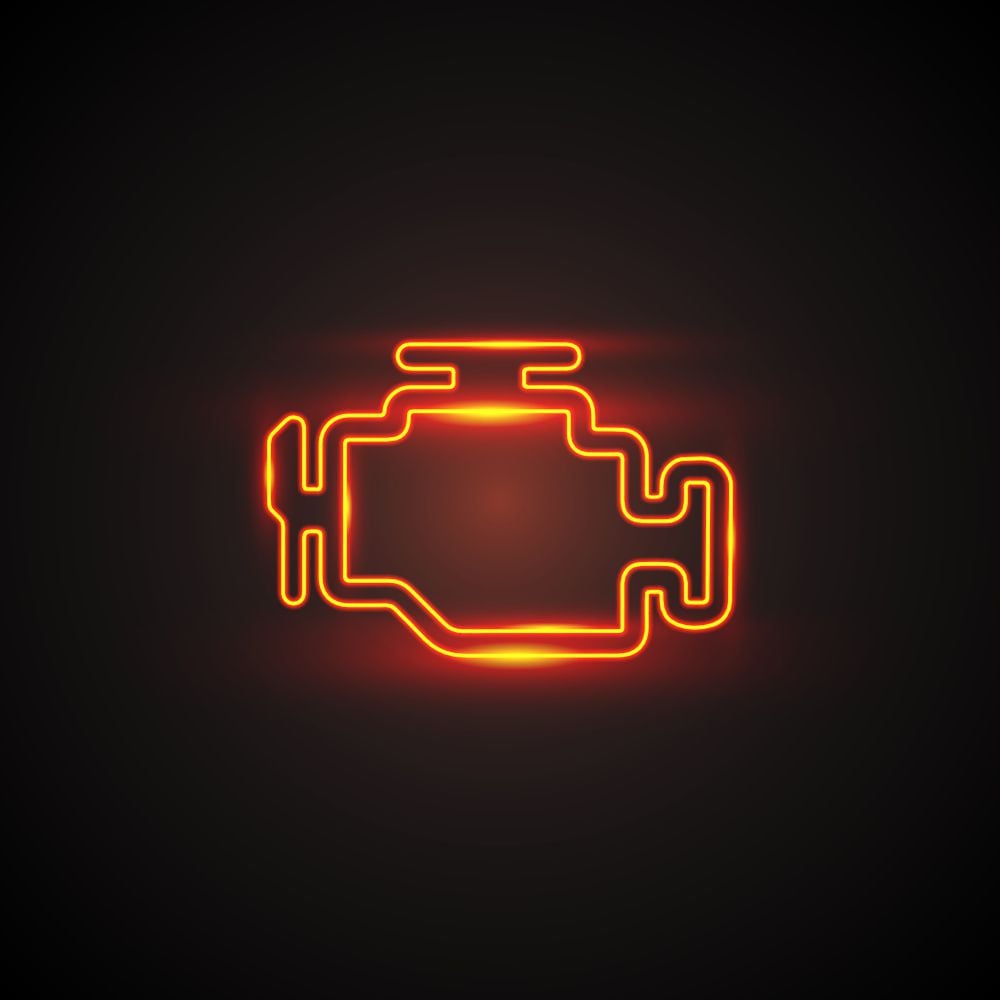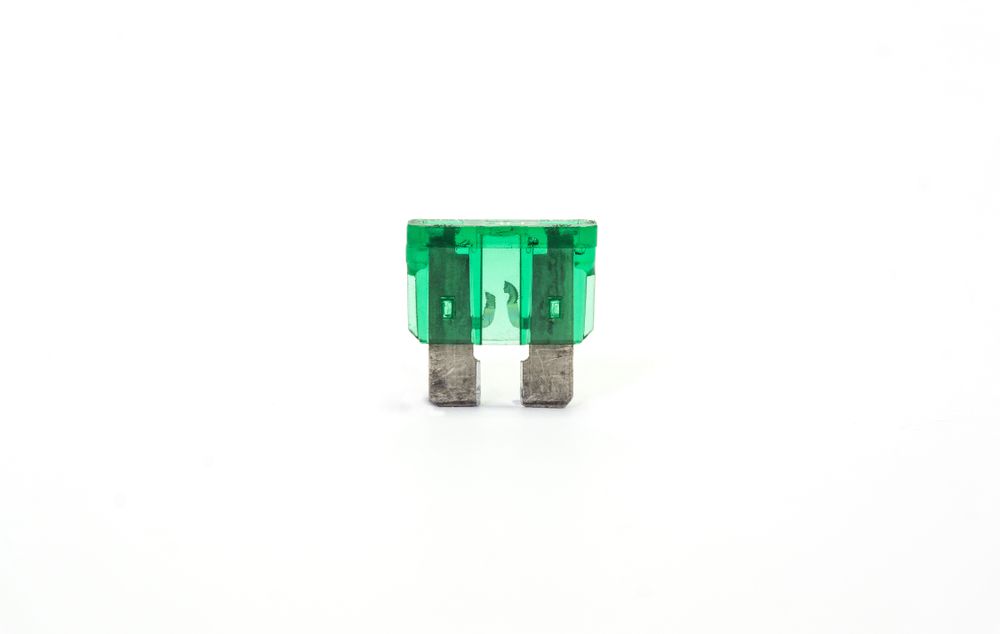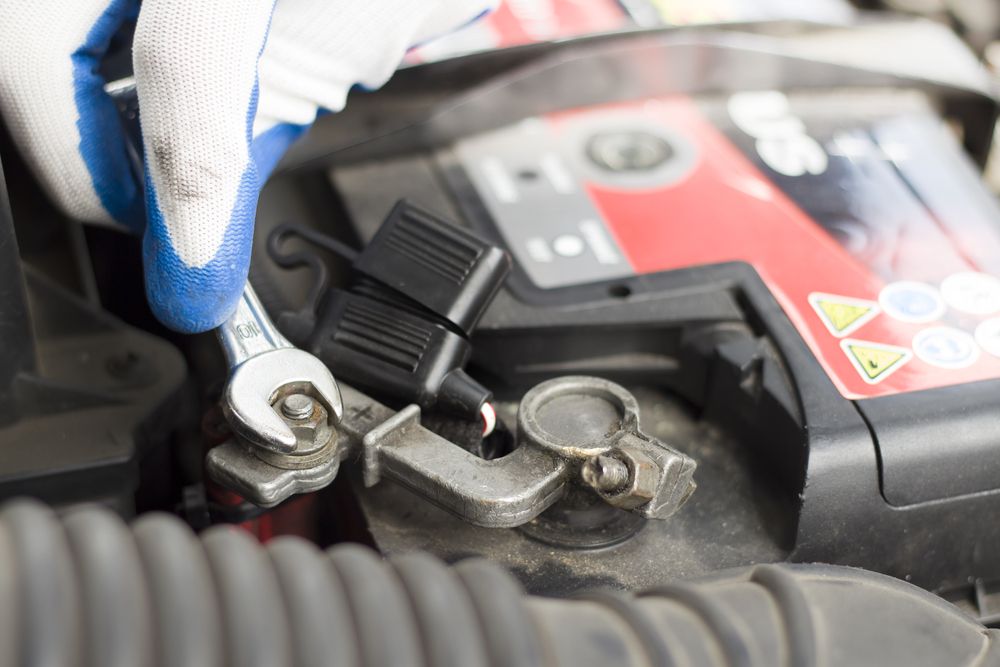Suppose you are driving in your car, and you look down and see that your
check engine light is on. You get your car checked out, and whatever made
it come on gets fixed. Driving again later, your check engine light is
still on. You may wonder - "Is there a fuse for the check engine light?"
There is no fuse for the check engine light, but there is a way to
reset it using the engine control unit fuse. The location of the fuse
boxes depends on the model of your car, but it will generally be on the
side of the driver's side console or near the engine.
 Engine lights don't have their own designated fuse.
Engine lights don't have their own designated fuse.
Where Is The Engine Light Fuse?
There is no fuse for the check engine light. The engine fuse (or rather, the engine control unit fuse) is located in a
fuse box in your car. The location of the fuse box depends on the make and
model of your car, and most cars have at least two fuse boxes.
Under the hood
The primary place that you will find a fuse panel is the one located under
the hood in the engine compartment.
The side of the dashboard
If you look at the driver's side of the dashboard, next to the instrument
cluster, there will be a removable plastic part. Taking this off will
expose your fuse panel.
Finding the fuse
Finding the fuse is simple - there should be a 'map' or a diagram of what
all the fuses do somewhere on your fuse box. If you do not see the fuse you
are looking for in one fuse box, check the other one. If there is no
diagram, check online for your specific make and model of car.
How Do You Change A Check Engine Light Fuse?
You can reset the check engine light (again, actually the engine control
unit fuse) simply by using your fingers or a fuse puller to grip the end of
the fuse and pull it out, then replace it with a new fuse. When you go to
replace a blown fuse, however, be aware that there are many distinct types
of fuses, each with different amperage ratings (the number on the fuse).
Your replacement fuse will need to be the same type and amperage rating.
Here are some of the more common types of fuses:
Mini
This is the most common fuse type. They measure 10.9mm x 3.6mm and extend
out to 16.3 mm.
Low-profile Mini
These are small, compact fuses, though not the smallest. They are squatter
than the mini - the blades extend out about half as far.
Micro2
These tall thin fuses are the smallest types of fuses that you can find.
Micro3
A Micro3 will have three terminals instead of two - this is the only fuse
with this feature.
ATO
Also known as regular or standard fuses, this is the largest of this fuse
group.
Maxi
These are the largest fuses and are not typically used in your vehicle.
 A blown fuse.
A blown fuse.
Can A Blown Fuse Turn On The Check Engine Light?
When a fuse is blown, it can turn on a check engine light. One way that you
can diagnose this is to go to a mechanic and have them run a diagnostic,
though it is much cheaper (free) to go to your local automotive shop and
ask to borrow their OBD code reader and check the fault codes yourself by
hooking it to your car's computer.
If you don't know how to hook it up, an employee at the automotive shop can
show you and they can provide you with a complete diagnostic report with
all the error codes when complete. If a blown fuse is the culprit of the
check engine light coming on, then you are well situated to buy the fuses
you need and change out the fuse within ten to fifteen minutes.
Is There A Way To Turn Off The Check Engine Light?
There are several ways to turn off the check engine light. Check engine
lights tell you if there is an issue with your vehicle. However, if it is
cleared and you are looking for a way to perform a check engine light
reset, try one of the following methods.
Let it turn off by itself
Once a fault is cleared in your car, it takes a few cycles to clear on its
own. A cycle here is defined as turning your car on and off. This may take
a few days to clear. If your check engine light is still not off, make sure
that there isn't another reason that it is still on.
Turn the ignition on and off
If you have a few minutes to kill and have the patience, sit there and turn
your car on and off until it clears out. This should take no more than a
few minutes to clear the check engine light.
Use an OBD code reader
While not all OBD code readers offer this feature, you may be able to turn
off the check engine light with it after all the faults have been cleared.
You can find one at your local automotive shop or get one online. The
cheapest one will run you about $25, but check the features on the OBD code
reader before buying it.
The more features that it comes with, the more expensive it will be -
professional models can cost thousands of dollars. It is also possible to
download apps to your phone to do this, though check the app's requirements
as it may not work for your vehicle.
 Disconnecting the battery will reset the check engine light.
Disconnecting the battery will reset the check engine light.
Disconnect your battery
This method doesn't work on every make and model, but if you have a
stubborn check engine light, it is worth a try. Disconnect your battery's
negative terminal (the black-colored one, marked with the minus sign) and
wait thirty seconds before reconnecting it.
Your check engine light should be reset. However, make sure you keep an eye
on your check engine light after you reset it. If it comes on after you
have driven for a few miles, there is something wrong with your automobile
that needs to be fixed.
Pull the engine control unit fuse
As previously mentioned, pulling the engine control unit fuse can help you
turn off your check engine light. When you pull it, give it about thirty
seconds before replacing the fuse.
Conclusion
If the check engine light comes on in the vehicle, don't just look for a
way to turn it off automatically - check to see what is wrong. But if you
have already taken care of the issue and the check engine light won't go
off, there are several ways to fix the problem. These include letting it
turn off by itself naturally, resetting it with a code reader,
disconnecting the battery, or simply pulling the engine control unit fuse.